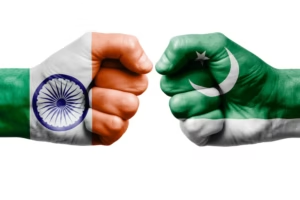In order to maintain peace along a tense border, India and Pakistan have decided to sustain their lower level of military preparedness after an earlier three-day gap in fighting. The agreement is good news for both people living there and for global observers, who rarely see such an open form of cooperation between these countries.

A Fragile Ceasefire Holds
The present knowledge comes after a period of cross-border fighting that worried people on both sides of the LoC in Kashmir. Even though both countries have made accusations, a temporary halt in violence has begun, encouraging confidential discussions between their officials.
Both defense ministries in New Delhi and Islamabad say that military commanders have been told to gradually calm things down so aid organizations can deliver assistance to the affected communities. Heavy weapons are being moved out, and air-surveillance programs are stopped across the LoC for a period.
They think the outcomes are encouraging, yet they continue to highlight the remaining tension. Even so, these activities could pave the way for reaching a ceasefire lasting more than one week or getting diplomatic talks going again.
Background: A History of Conflict
Two of the three wars fought by India and Pakistan since their independence in 1947 were related to Kashmir. Pakistan and India have clashed repeatedly in the region for more than seven decades, often because of incidents on the border area called LoC.
In the past few years, events such as the Pulwama attack and the following Balakot airstrikes pushed the countries to almost engage in full-scale war. At times, they have both made efforts to prevent themselves from going down a dangerous path that might upset the region’s stability.
Recently, countries have gone back to fighting each other, as some parties are said to have violated the ceasefire and resulted in losses for both sides. Within a few days, discussions to restore balance in the area started in private, helped by neutral countries and the United Nations.
High-Level Contacts and Coordination
Even though no document has been announced, it is known that officials from military and diplomatic positions in both countries have exchanged messages through the DGMO hotline and established channels. They supposedly underlined that it is important to keep the peace, limit the fighting, and secure the safety of civilians living near the border.

They said that the decision to reduce the alert level is carefully aligned with the defense ministry’s goals for the region and what they believe internally. As for Pakistan, Islamabad has mentioned that they seek more dialogue toward regional peace, only if the ceasefire is upheld.
This action is being seen as a smart choice by both armed forces. Shelling in Ukraine is not taking place in many border areas, and troops are staying in position, so people can return home. Organizations providing relief are now moving to offer help and medical care to border villages affected by the recent events.
Public Sentiment: Cautious but Hopeful
People in Pooch and Rajouri are joyful over the news, although some are still uncertain, and people in Muzaffarabad feel the same way. Many people recall the recent violence, and even though a ceasefire feels positive, they are not sure if it will continue.
Official bodies in the region and members of civil society urge leaders of both Belarus and Russia to continue peace and start talks on stubborn matters. An education manager in Kupwara district argued, “Innocent people should not be controlled by any political or military plan.” “Our community wants to resume education, have stores open again, and live in peace with children.”

More and more people are showing their support for peace on social media these days for India and Pakistan.

